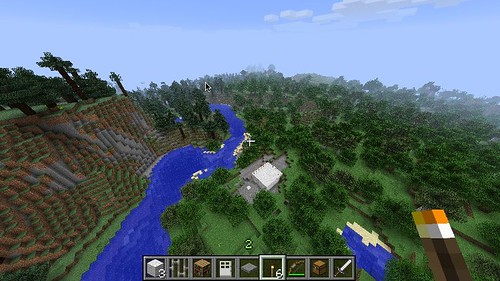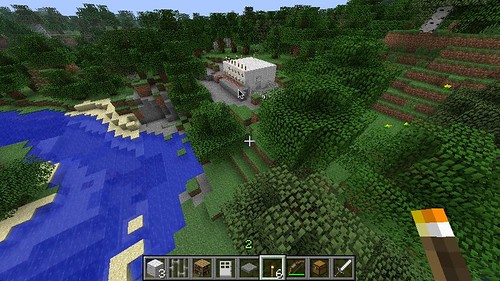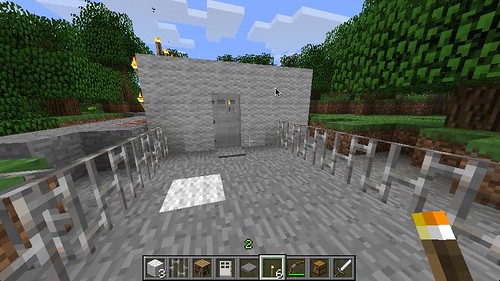In the final show of Cool Stuff Collective series 3 I put forward my wish for 2012, which actually occurs at 20:12 in the show that ICT in schools needed a revamp (there a few days left before this rotates from the player, I don’t have the rights to youtube it AFIAK yet). Now I am not the first person to say this about ICT, and I was adding to the many voices both of the various tech industries, reports to government UPDATE* The Royal Society have just release a report too here* and those teachers bypassing some of the ICT curriculum to get kids actually skilled in computer science and building with technology. Yesterday the government minister for education Michael Gove gave a public speech at the BETT education conference that indicated that all the pressure was working. Admitting that ICT was not working, was boring the kids and was leading to a crippling loss of hi tech skills in the UK.
There is a full transcript of what was said here and of course it features general political sound bites. yet the core of it is positive as far as I can see.
Two things stood out for me.
1.”That’s why, rather than focusing on hardware or procurement, we are investing in training individuals. We need to improve the training of teachers so that they have the skills and knowledge they need to make the most of the opportunities ahead.”
2. “An open-source curriculum
Advances in technology should also make us think about the broader school curriculum in a new way.
In an open-source world, why should we accept that a curriculum is a single, static document? A statement of priorities frozen in time; a blunt instrument landing with a thunk on teachers’ desks and updated only centrally and only infrequently?
In ICT, for example, schools are already leading the way when it comes to using educational technology in new and exciting ways – and they’re doing it in spite of the existing ICT curriculum, not because of it.
The essential requirements of the National Curriculum need to be specified in law, but perhaps we could use technology creatively to help us develop that content. And beyond the new, slimmed down National Curriculum, we need to consider how we can take a wiki, collaborative approach to developing new curriculum materials; using technological platforms to their full advantage in creating something far more sophisticated than anything previously available.”
1. Is about people, teaching teachers, industry getting involved to help and
2. is an amazing alteration in the view that the processes and interactions are open source as much as the actual technology itself. Something many of us in the emerging tech and open source world already know and share.
It could be seen as dropping responsibility for ICT but I think this will work out, as most collaborative ventures as activists with clear positive ideas making changes and that will naturally drag everyone along.
As you know I try and not just talk about things but do take a bite out of technology so you don’t have too and this has all coincided with some observations and activities by my kids, aka the predlets. Predlet 1.0 is 8, Predlet 2.0 is 5 (just about). Yesterday Predlet 1.0 was not well in the morning so ended up not going to school. Rather than veg out in front of the TV I put minecraft on for her. Yes a game, but also with some other properties.
With a few hours of focus she got to do things other than just build blocks. She tried survival/crafting mode for a while and learned how hard it was to manage resources, this made her appreciate the open world of creative mode where all the blocks and resources are available to you all the more. Having switched to creative mode she started to explore the functioning blocks. Minecraft has mechanical and electrical components in it. Very soon there were switches and pressure plates opening and closing doors, mine carts propelled by red ore repeaters on rails, some needing more power to go up hill etc.
When Predlet 2.0 came home from school he was keen to join in so it was time to get computers running and a local minecraft server. This then meant the two of them were in their own virtual world, together. Where the actions of one impacted the other. They talked about it a lot and started to build a house. This was a collaborative build in a location they felt was best for the house. By a river near some mountains with a lush forest around it. 1.0 the showed 2.0 how the switches and mechanisms worked on doors.
This is the result. Viewed from my minecraft as I too can attach to our server and see how things are getting on.


Here there is a pressure plate in front of and behind the door to “automate it”

The small room has a bed each and also notice a bookcase as books are important

Whilst running this multiplayer setup across our network there was a crash. I was on a call so tech support was closed for 30 mins. They used their initiative and got the server going again, though were foiled by passwords on the clients, so instead switched to offline play on their own individual worlds until I was free.
Now this may not be a regular lesson, I am not a teacher. Yet this covered an awful lot of ground.
a)In world they were moving around in 3d space, aware of one another. There were creating and removing 3d block objects, choosing from inventories. So the mechanics of a metaverse, just like being in Second Life or OpenSim were in full use.
b)They were collaborating on a single project, dividing the tasks up, one did the walls whilst the other did the floor.
c)They chose a location near water and other resources, which to all intents and purposes is a geography lesson!
d)They shared how to start to build machinery, basic physics and mechanics and to some degree electronics, and implemented those together.
e)When there was a tech failure they attempted to resolve it, understood there was a server component that was brokering the 2 clients. When that did not work they worked out a fall back resolution. They now also are starting to ask about general systems management and how interconnected processes need to be kept running.
f)They enjoyed it immensely.
For me seeing a multiplay sandbox creative environment like this running is yet more of the same that we had with Second Life back in 2006 when we started to use the environment to communicate and share ideas. Back then we wanted our own servers for privacy and control. That spun out into things like Opensim which exists today. The pattern is the same with minecraft though it has more of a game feel and reason for existing, yet this creative mode becomes about building. Why build? well answers a) to f) above should be a good reason.
We are obviously a tech g33k family, and social exclusion from technology does worry me. However… put this sort of thing in schools to get kids interested in the first place? Those that like sys admin will gravitate towards the power of running servers. Those with a design eye will build interesting things, the engineers will make machines and understand cause and effect. Then of course there is the growth of 3d printing, the digital things can also become real products. Online social skills and etiquette will grow. It does not have to be minecraft, there are lots of ways to do this. It does not even have to be a specific tailored experience.
These things are there, available, not science fiction. There are also those of us out here ready to help because we have tried some things out. So the future looks bright doesn’t it?

Leave a Reply